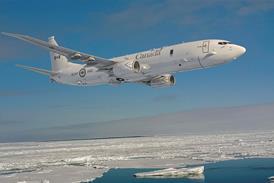General Electric and Rolls-Royce have passed the first milestones on competing designs for an all-new engine core being developed for next-generation transport, surveillance and command and control aircraft.
Since contract award last September, both contractors report completing a conceptual design review for a demonstration rig called the Highly Efficient Embedded Turbine Engine (HEETE).
Sponsored by the US Air Force Research Laboratory, the goal is to prove that a 25% improvement in specific fuel consumption can still be extracted from a conventional turbofan design.
Both GE and R-R are seeking to accomplish that by dramatically raising pressure ratios at the compressor stage, to at least 230% higher than a state-of-the-art engine core in 2000. GE also claims an overall ultra-high-pressure ratio of 70:1, factoring in improvements in the high-pressure turbine.
Raising the pressure ratio also means driving up temperatures. The HEETE engine core will burn 325°F (163°C) hotter than a comparable engine today, says Phil Burkholder, chief technology officer at R-R's Liberty Works research unit.
Despite the higher temperatures, the HEETE project does not focus on creating special new alloys, but on proving new cooling techniques. The problem includes a requirement to cool the cooling air through a system of heat exchangers and other design devices, Burkholder says. The dramatic jump in pressure ratios is mainly a function of designing new aerodynamic shapes for the compressor blades, he adds.
"I think there really is room for continued improvement and it's really important from an engine and science point of view that we continue to have those exciting opportunities out there," says Burkholder. There is a misconception "that there's nothing left in gas turbine technology", he adds, "but I think the exciting thing about what we're doing is how do we continue to find those barriers and knock them down and take them to the next level."
Source: Flight International




















